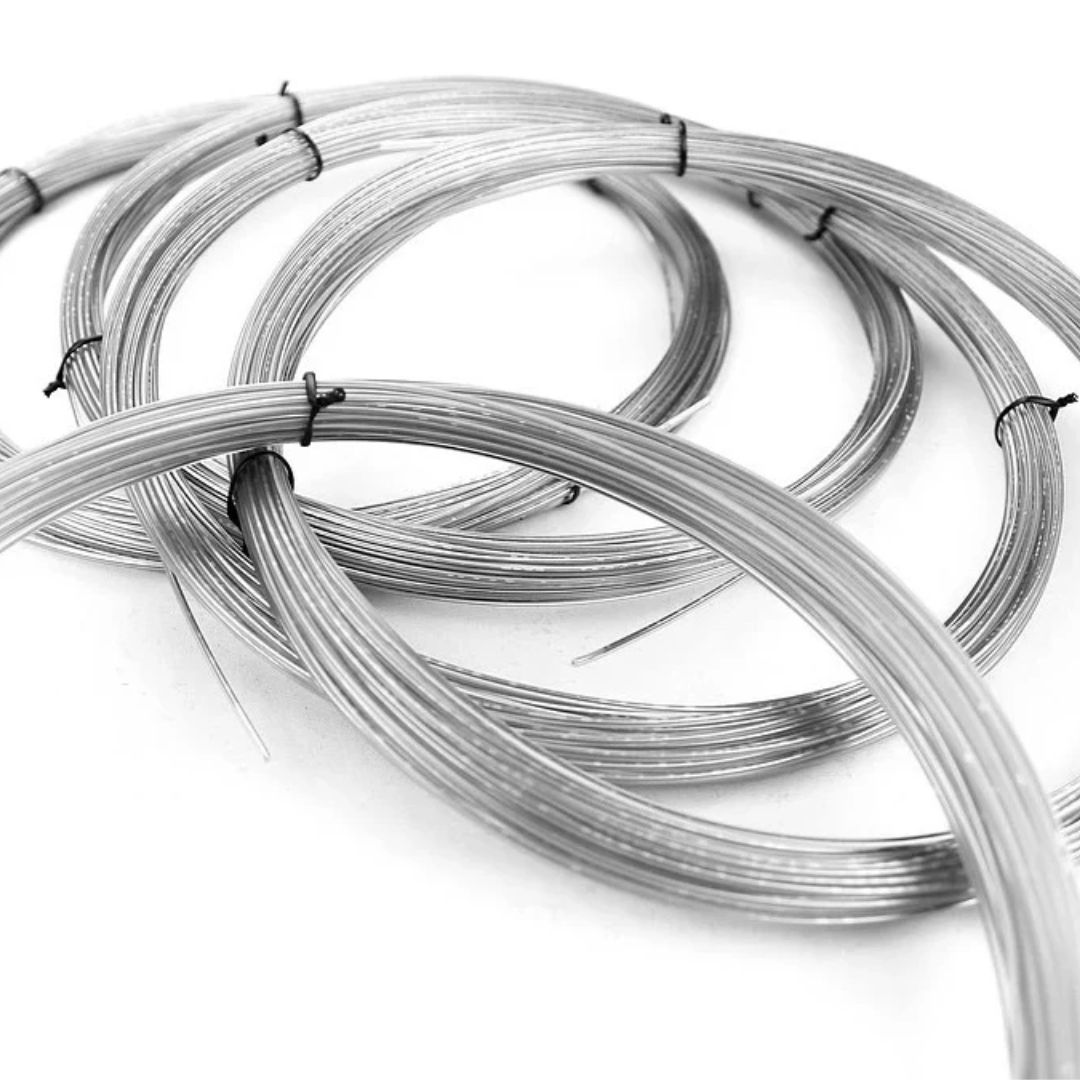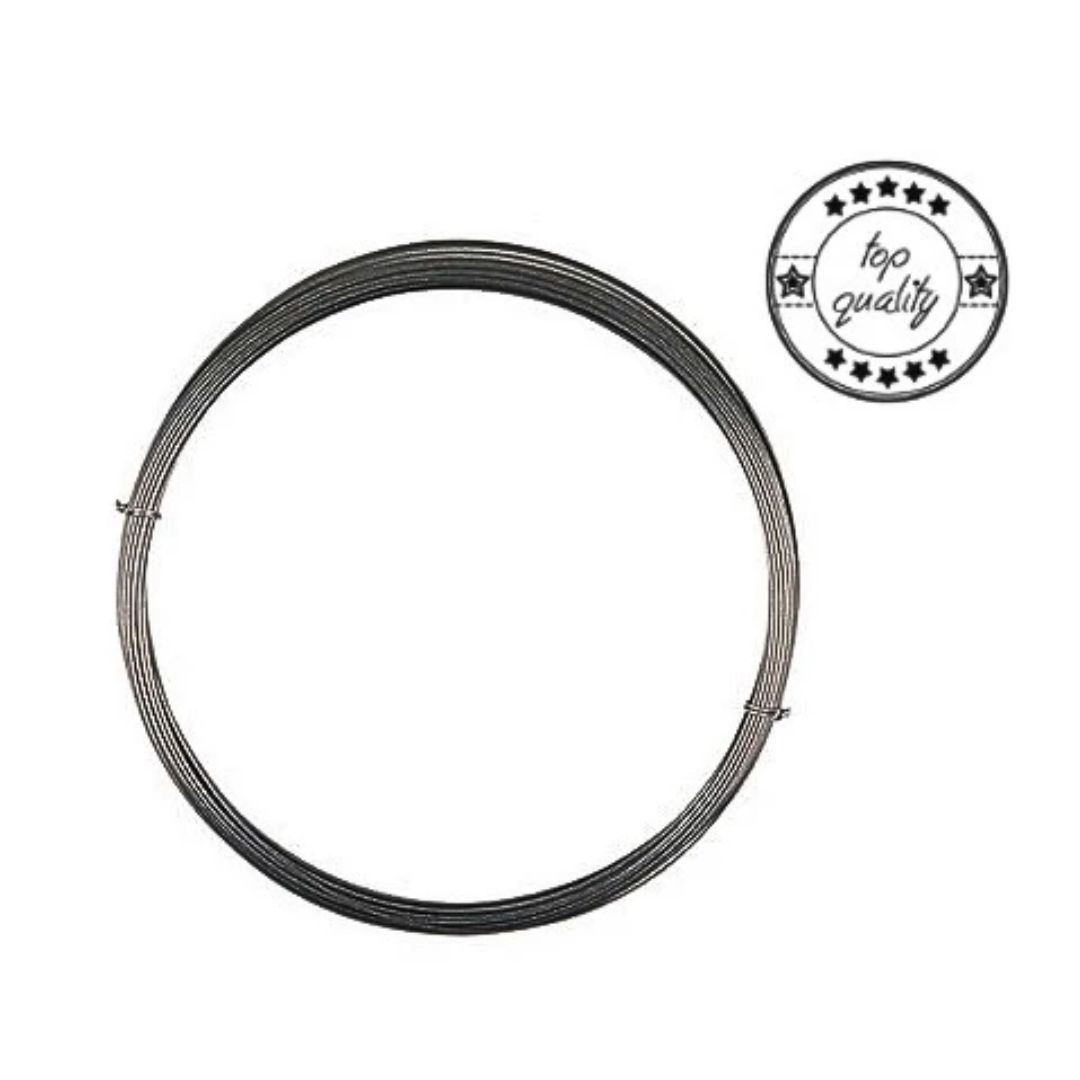Everything you need to know about the types of covered wire for millinery
To make a hat, a wide-brimmed hat, a tiara or a headpiece, various materials of different types, shapes, and sizes are required. One of them, though sometimes overlooked, is essential for giving shape, structure, and life to many creations: covered wire.
At Artipistilos, we understand that covered wire is more than just a support. It's a versatile tool offering practical and creative solutions in millinery, floristry, jewelry making, theater, decoration, and many other disciplines. Our wires consist of one or two strands of malleable, memory-retaining metal, coated with different materials that not only protect them but also add functionality.
Beyond being used to hold together decorative stamen bouquets or reinforce the structure of hats and headpieces, they can also be sewn onto fabrics like tulle or netting to shape them. Some models are so attractive on their own that they're used to create decorative figures.
At Artipistilos, you'll find high-quality covered wires for headpieces: none of those that break upon bending or have coatings that peel off easily. We work with reliable, professional materials that allow you to create sturdy and durable headpieces and structures.
And the best part: we offer a wide variety of types, finishes, and thicknesses, because each project needs its ideal tool.
Types of Covered Wire Available at Artipistilos
Below, we detail the types of wire we have in our online store, all suitable for millinery, but with specific characteristics that make them more or less appropriate for certain uses:
-
Cotton and Rayon Thread Covered Wire
A classic in millinery. It's a galvanized wire covered with cotton thread, which, due to its special cotton coating, produces a non-slip effect, ideal for sewing and easy handling.
This wire is especially useful for:
-
Inserting into the outer edge of a hat brim.
-
Creating curved shapes or structures that need to remain stable.
-
Uses in floristry, handmade jewelry, or crafts.
It's ductile, easy to shape, and surprisingly lightweight, making it one of the most versatile options on the market.
You can view the cotton and rayon thread covered wire on our website here
-
Paper-Covered Floral Wire / Floral Wire
This wire is ideal for more delicate work, such as:
-
Creating stems and leaves of artificial flowers (fabric and porcelain).
-
Shaping and stabilizing flowers, petals, and stems.
-
Floristry projects like wreaths or bouquets.
-
Crafts, lightweight structures, and decorative details.
We offer this wire covered in papyrus paper, allowing you to easily paint it and glue it with floral adhesive.
Click here to see all our floral or paper-covered wire.
-
Plastic-Covered Wire
This model is an excellent wildcard in millinery. It's a galvanized wire coated with a layer of white or transparent plastic.
Its advantages:
-
Highly moldable due to its malleability.
-
Ideal for sewing into fabrics or the edges of wide-brim hats.
-
Has "memory," so it retains the shape you give it.
It's less rigid than classic millinery wire, but precisely for that reason, it adapts to more dynamic or experimental creations and is very useful for solving technical problems in complex pieces.
Find all our plastic-covered wire here
-
"Piano Wire" Type (Uncovered)
Although not covered, it deserves special mention. This wire has great rigidity and is perfect when maximum structural reinforcement is needed. In millinery, it's mainly used for:
-
Reinforcing the brims of large wide-brim hats.
-
Creating any type of prominence, in period wigs for theater and audiovisuals.
-
Textile work where great firmness is needed.
We offer it in different thicknesses, adapting to each need. Although it's more demanding to work with, its strength makes it indispensable for certain large or heavy pieces.
You can see our piano wire here
What Can These Wires Be Used For?
Although each has its particularities, all the types of covered wire we offer can be used in:
-
Millinery and headpieces: to provide structure, shape, volume, or firmness to your creations.
-
Floristry: creating stems, leaves, and bouquets.
-
Crafts and decoration: structures, figures, headband bases, Christmas or themed decorations, and jewelry.
-
Theater and cosplay: prominences, structures for wigs/fantasy wigs, complex headpieces, textiles, etc.
The key is to know well the type of wire you need and, above all, to choose the right thickness.
THICKNESS GUIDE
We often forget that wire thickness is as important as the type. Choosing the wrong gauge can make the work uncomfortable or even ineffective. Therefore, here's a small guide to help you decide:
-
1.2 mm – Extra rigid. Ideal for large or firm hat structures.
-
1.0 mm – Firm. Perfect for hat brims, flower stems, or prominences that need stability.
-
0.8 mm – Moderately firm. Useful for structural details, flowers, ribs, and soft reinforcements.
-
0.4 mm – Very thin, almost like thread. Excellent for attaching ornaments, intricate details, or very subtle ribs.
Covered wire is one of those materials that aren't always visible but make the difference between an amateur piece and a professional creation. At Artipistilos, we are committed to offering you high-quality products that meet your needs as a creator or industry professional.
If you have questions about which wire to choose, don't hesitate to consult us. We're here to help you!
Explore all our covered wires here: COVERED WIRE
We also invite you to visit our online store and discover all the available options.
Did you find this article useful? Leave us a comment and share it on social media. We'd love to hear your opinion!


.jpg)
.jpg)

